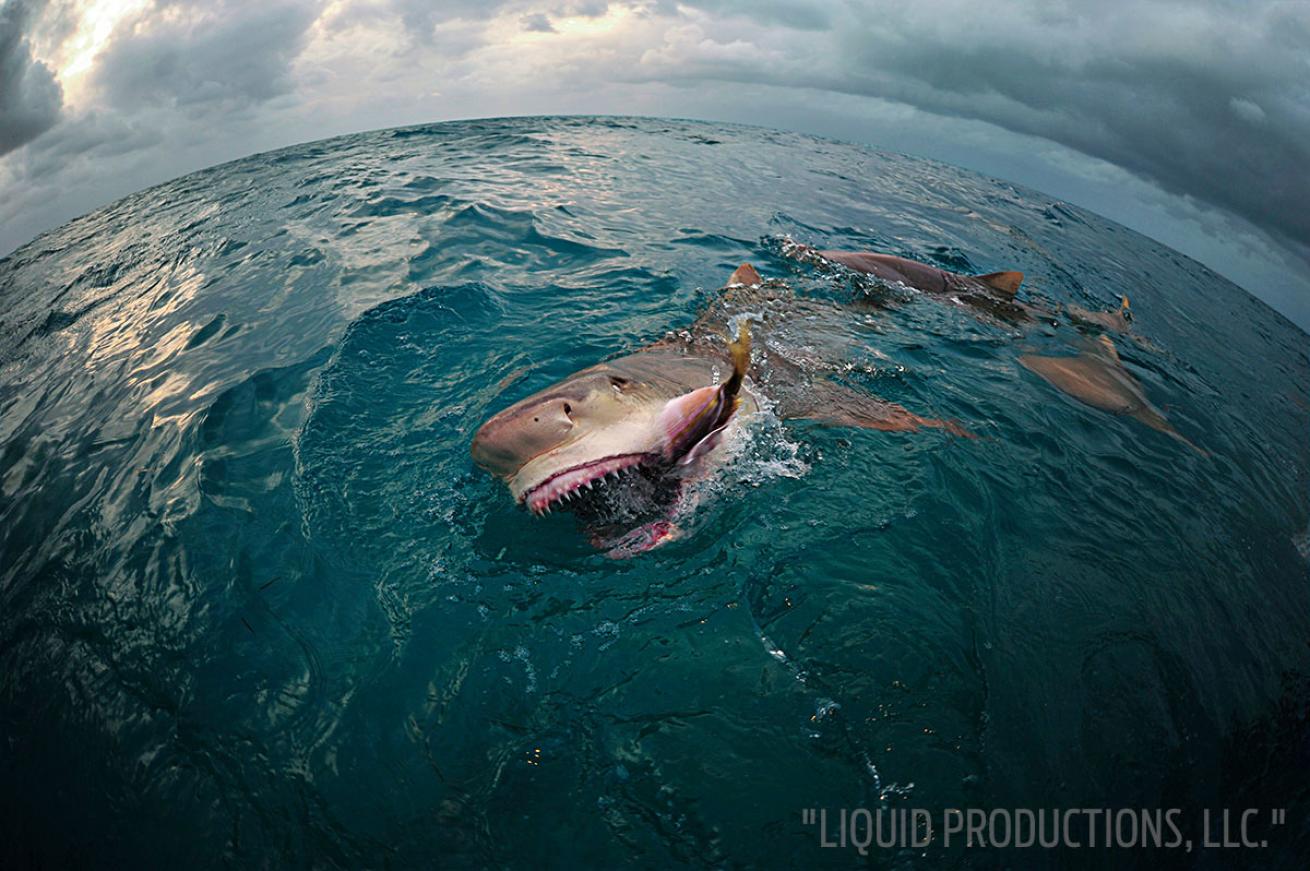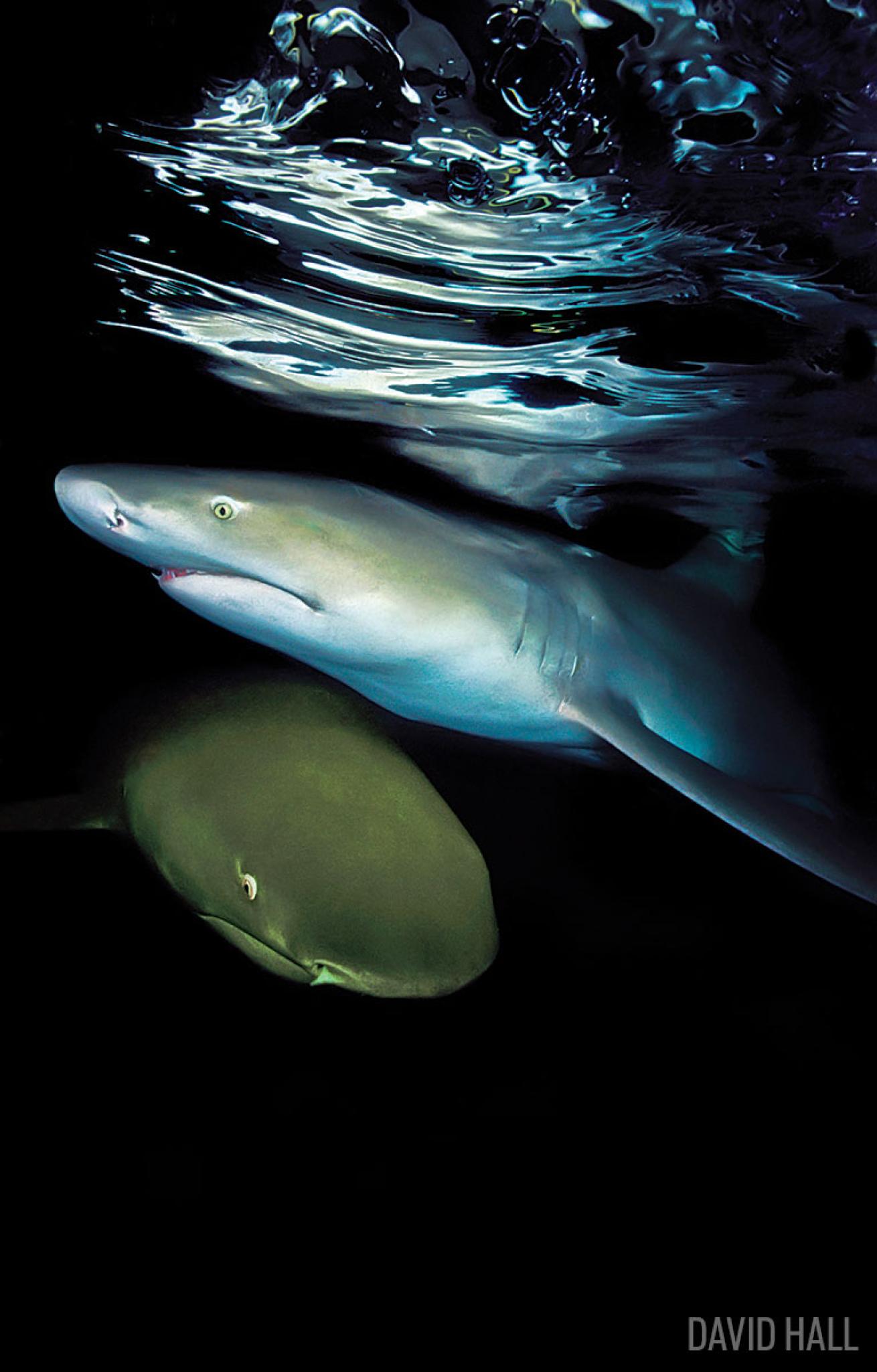Scuba Diving with Lemon Sharks
The subtle yellow coloration for which the lemon shark is named offers an easy way to pick them out of a crowd. Despite their slightly intimidating appearance, lemons are fairly docile sharks that pose little danger to people. Divers see lemon sharks quite frequently, though few realize that there are actually two distinct subspecies of lemon shark.

Liquid ProductionsFor year-round encounters with lemon sharks, head to Tiger Beach, Bahamas.
For American divers, the common lemon shark is the one that undoubtedly comes to mind. They span along the Eastern Seaboard and the Gulf of Mexico all the way down to Brazil, the Pacific coast of Central America, and even West Africa. However, if you’ve found yourself alongside a lemon shark in Fiji or on the Great Barrier Reef, you’ve actually seen a sicklefin lemon shark, which looks quite similar to its more-common cousin, aside from the more-sweeping, scythelike shape of its dorsal fins. The sicklefin lemon shark roams the Indo-Pacific, from the Red Sea to the South Pacific.
Lemon sharks like the same conditions as the more-aggressive bull shark: shallow coastal waters, mangroves and around river mouths. As with bull sharks, lemons can tolerate fresh water, though they don’t swim thousands of miles up rivers like their brawnier brethren. They feed mostly on smaller fish, including parrotfish, stingrays and crustaceans. Living in sand flats and sea grass beds allows them to make good use of the electroreceptors on their nose, called ampullae de Lorenzini, which help them detect fish and other creatures, even buried in the sand.

David HallLemon sharks are named for color, not quality.
For marine scientists, lemon sharks are popular and intriguing subjects because of their migration routines. Like salmon and sea turtles, female lemon sharks return to the same spawning grounds where they were born to give birth to their own young. While pregnant they have a tendency to congregate en masse in areas like Florida’s east coast from December to March, when divers may encounters dozens of them at a single dive site. Mangroves in the Bahamas are also popular lemon shark nurseries. Lemon sharks are viviparous, which means they give live birth to their pups in litters that can vary from just a few to 15 or more.
Without a doubt, the best year-round spot to see lemon sharks is the legendary Tiger Beach in the Bahamas. This shallow sand flat in the middle of the Gulf Stream is a hotbed of can’t-miss shark action, with lemons, tigers, bulls and others making regular appearances. The white-sand seafloor in less than 20 feet of crystal-clear water offers ideal lighting conditions for capturing stunning pictures of these unique sharks.
FAST FACTS ABOUT THE LEMON SHARK
Max Length: 10 to 12 feet
Max Weight: Up to 400 pounds
Status: Near threatened. Numbers have decreased in recent years, but not yet to the point that they are threatened or endangered.
Fun fact: Lemon sharks survive very well in captivity, so they are one of the most widely used shark research subjects.
Danger Index: Lemon sharks are known to be fairly docile, but use caution.










